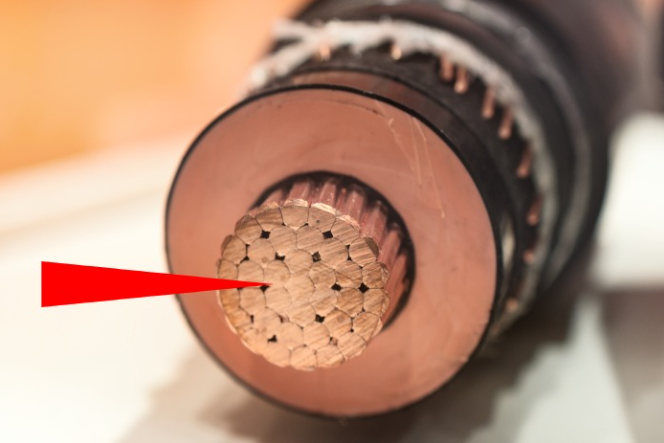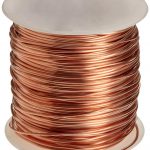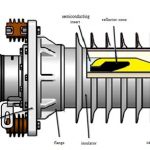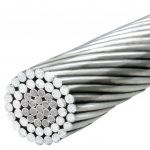Selecting the appropriate wire size is critical for the safety and efficiency of any electrical system. For a 600-amp service, the appropriate wire size would be 1,500 kcmil-gauge. However, there are various factors that affect the specified wire size.
In this article, we review factors affecting wire size, sizing a standard 600-amp wire service, aluminum wire service, and ground wire size.

Factors Affecting Wire Size
When selecting or a wire size for an application, several factors come into play. Some of them include:
- Current Capacity: The wire size must be large enough to channel the expected current without overheating or damaging the cable insulation. On the other hand, it should not be too large that it offers significant resistance to current flow.
- Voltage Drop: As the size of a wire increases, so does its resistance and the voltage drop across it. So, the size selection should be optimal and not be bigger than necessary.
- Cable Length: When transmitting electrical power over a significant distance, there will be losses due to the cable length. The power losses because of the length must be put into consideration in the selection of the cable size. Power losses due to cable length are often minimized by stepping up the voltage at the generation point using transformers.
- Ambient Temperature: The temperature of the work environment has a huge impact on wire functionality. High temperatures can reduce the current carrying capacity and increase cable failure risk. While very low temperatures can cause embrittlement. Generally, the higher the working temperature, the larger the size of the wire.
- Conductor Material: The material used for making a wire has an influence over its size. Generally, electrical wires are either copper or aluminum. Although both are good conductors, copper is more durable and safer, and should be the de-facto choice.
How to Size Standard 600 Amp Wire Service
Because of the several factors that influence a wire size, the process of sizing is simplified using standard calculators or charts. The 600 amp wire service usually serves for welding or some heavy-duty applications. At a temperature of 167℉ for the conductor, a wire needs to have a gauge size of at least 1,500 kcmil to carry 600 Amps. The number of amps the conductor can carry changes with temperature as the table below shows.
Wire Size Chart Including 600 Amp Service
| Wire Size (AWG) | Max Amps for Aluminum @ 167℉ | Max Amps for Aluminum @ 194℉ | Max Amps for Copper @ 140℉ | Max Amps for Copper @ 167℉ | Max Amps for Copper @ 194℉ |
| 14 | — | — | 20 | 20 | 25 |
| 12 | 20 | 25 | 25 | 25 | 30 |
| 10 | 30 | 35 | 30 | 35 | 40 |
| 8 | 40 | 45 | 40 | 50 | 55 |
| 6 | 50 | 60 | 55 | 65 | 75 |
| 4 | 65 | 75 | 70 | 85 | 95 |
| 3 | 75 | 85 | 85 | 100 | 110 |
| 2 | 90 | 100 | 95 | 115 | 130 |
| 1 | 100 | 115 | 110 | 130 | 145 |
| 1/0 | 120 | 135 | 125 | 150 | 170 |
| 2/0 | 135 | 150 | 145 | 175 | 195 |
| 3/0 | 155 | 175 | 165 | 200 | 225 |
| 4/0 | 180 | 205 | 195 | 230 | 260 |
| 250 | 205 | 230 | 215 | 255 | 290 |
| 300 | 230 | 255 | 240 | 285 | 320 |
| 350 | 250 | 280 | 260 | 310 | 350 |
| 500 | 310 | 350 | 320 | 380 | 430 |
| 600 | 340 | 385 | 355 | 420 | 475 |
| 750 | 385 | 435 | 400 | 475 | 535 |
| 1000 | 445 | 500 | 455 | 545 | 615 |
| 1250 | 485 | 545 | 545 | 590 | 665 |
| 1500 | 520 | 585 | 585 | 625 | 705 |
| 1750 | 545 | 615 | 615 | 650 | 735 |
| 2000 | 560 | 630 | 630 | 665 | 750 |
From the chart, a wire size of 1,000 kcmil copper carries up to 615 Amps, but at a high temperature of 194℉. This poses the risk of overheating to the wire and its insulation. As a result, a wire size of 1,500 kcmil is recommended for a copper wire as it carries 625 Amps at 167℉. While aluminum wire size of 2,000 kcmil can take up to 630 Amps at 194℉, but using this is not advisable. Generally, to avoid running wires at high temperatures, a 600 Amps service will use two 350 kcmil copper wires, which carry 310 Amps each.
Aluminum Wire Service
Aluminum service wires usually consist of aluminum cores as the conductor, with a PVC compound serving as insulation. Generally, they are suitable for operations up to 1,100 V. There are several benefits to using aluminum as electrical wires including:
- Aluminum is one of the lightest metals in commercial use. Although its conductivity is only 62% of that of copper, it is only one-third the weight of copper. As a result, it can conduct almost twice as much electricity in comparison to copper of the same weight.
- The PVC compound associated with aluminum wires provides high abrasion tolerance. Thereby providing better protection and higher service life.
- Alongside its lightweight, aluminum is one of the best metals when it comes to corrosion resistance. Thus, making it an ideal choice for outdoor installations.
- Aluminum wires are annealed, which makes them more flexible than copper wires. Also, this makes them more difficult to break due to mechanical wear.
- In addition, aluminum wires are a more cost-effective option to copper in large commercial systems.
On the other hand, there are downsides to using aluminum for electrical wires especially in comparison to copper.
- Aluminum expands and contracts at a rate much more than copper. As a result, it is susceptible to creep, leading to issues at connection points. This leads to sparking and potential fire in residential applications. Studies show that aluminum wiring is 55 times more likely to cause a house fire than its copper counterpart.
- Copper oxide is semi-conductive while aluminum oxide is an insulator. So, there is need to apply oxide inhibiting grease at connection points.
- Aluminum requires more conduit space due to larger wires.
Ground Wire Size
Ground wires offer a way of safely returning electricity to a service panel, and onwards into the Earth. This helps prevent danger to anyone working with the electricity nearby in the event of a short circuit. The most common ground wires are bare copper and gauged copper, although aluminum is another common option. Bare conductors are popular in residential applications because the absence of insulation gives it better conductive properties. Calculating the cross-sectional area (S) of a bare ground wire depends on the ground fault current (Ig) duration of fault (t), and the current density of the conductor (k).
![]()
Charts offer an easier way of selecting an appropriate ground wire, with a larger fault current requiring a larger ground wire.
| Rating of Overcurrent Device in Circuit (Amps) | Copper Size (AWG or kcmil) | Aluminum Size (AWG or kcmil) |
| 15 | 14 | 12 |
| 20 | 12 | 10 |
| 60 | 10 | 8 |
| 100 | 8 | 6 |
| 200 | 6 | 4 |
| 300 | 4 | 2 |
| 400 | 3 | 1 |
| 500 | 2 | 1/0 |
| 600 | 1 | 2/0 |
| 800 | 1/0 | 3/0 |
| 1000 | 2/0 | 4/0 |
| 1200 | 3/0 | 250 |
| 1600 | 4/0 | 350 |
| 2000 | 250 | 400 |
| 2500 | 350 | 600 |
| 3000 | 400 | 600 |
| 4000 | 500 | 750 |
| 5000 | 700 | 1200 |
| 6000 | 800 | 1200 |



